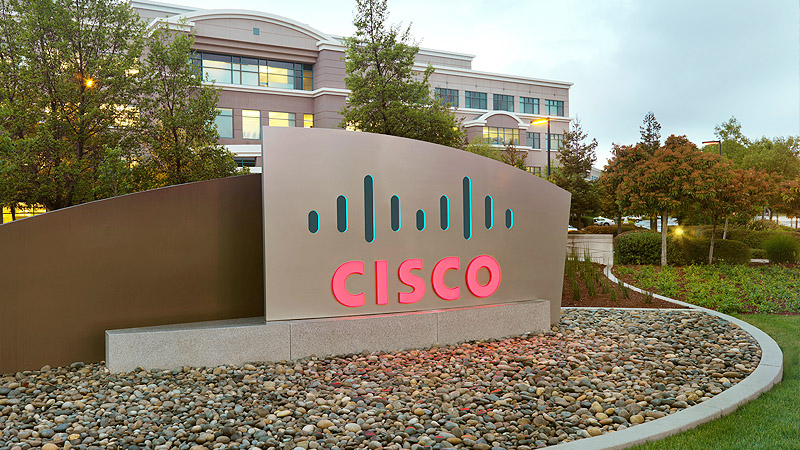MENLO PARK, Calif., June 21, 1993--Cisco Systems has enhanced its Cisco 500 Communication Server to offer improved remote accessto corporate internetworks via public phone lines for small remoteoffices and individual telecommuters.
The Cisco 500-CS--introduced a year ago as a combinedasynchronous (dial-up) router, terminal server, protocoltranslator and telecommuting server--now offers true dial-on-demand and bandwidth-on-demand routing. Cisco also has addedrouter support for Novell's IPX protocol and is able to supportall services on all ports.
Bruce Byrd, Cisco product marketing manager, said, "Everyday, corporations are expanding the peripheries of their networks,linking up not only small remote LAN workgroups that need periodicaccess, but individuals working off-site, as well. With the highcost of leased lines, asynchronous communication has gained inpopularity as technology advances have allowed larger amounts ofdata to be sent reliably over public telephone lines.
"Our enhancements to the Cisco 500-CS make it an efficientand cost-effective means of getting remote users onto the network.Now a distant workgroup member or telecommuter can have the sameaccess to network resources as any headquarters employee."
True Dial-on-Demand Routing for Small Remote Sites
The Cisco 500-CS now offers the full dial-on-demand routingfeatures that maximize WAN-link efficiency in Cisco's family ofsynchronous routers. Rather than having multiple asynchronousmodems store one phone number each, the Cisco 500-CS has a mappingtable of all numbers assigned to remote networks. When the unitreceives a packet destined for a remote site, it retrieves thatsite's phone number from the table and dials an attached modem.To facilitate dial-on-demand routing the Cisco 500-CS uses"chat scripts," a macro language that lets the unit send commandsto attached modems--to dial the modem, for example, or to enableor disable a feature such as data compression.
When the amount of traffic to or from the Cisco 500-CSexceeds the line bandwidth of the asynchronous routing link, abandwidth-on-demand feature allows the unit to automatically dialup and establish parallel router links between sites and performload balancing across them. When the additional bandwidth is nolonger needed, the extra line is brought down.
Support Added for Small Sites' Most Prevalent Protocol, IPX
Novell IPX, the industry's most widely used PC networkoperating system, is pervasive in small offices characterized by afew PCs and a file server. To its previous TCP/IP support, theCisco 500-CS now adds IPX support, allowing remote Novell LANs tointernetwork with one another using asynchronous dial-on-demandrouting.Any Port/Any Service: More Flexibility for Telecommuters
Until now, each of the Cisco 500-CS's 8 or 16 serial portswas able to support a subset of protocol services. A port wouldbe configured for PPP or SLIP, for example, and a separatetelephone line established for it. Now any port on the system canbe used for any service, enabling the user to set up one telephonerotary to multiple ports. Whatever the desired protocol (SLIP,PPP, Compressed SLIP or PPP, XRemote, Telnet, LAT, TN3270, orRlogin), a remote user can dial into one number, and a centrallylocated Cisco 500-CS, acting as a "telecommuting hub," selects aport and provides access to all network resources.As a remote asynchronous router, the Cisco 500-CS also candial this common phone number and establish intersite routerlinks, greatly reducing the administrative overhead associatedwith giving multiple users access to different network resources.
Username/password access control is available for bothtelecommuting users and remote asynchronous routers, with theCisco 500 providing automated login to the central network accesscontrol system for remote user verification.
The Cisco 500-CS also can act as a terminal server andprotocol translator. Users can connect up to 16 terminals(including X terminals), PCs, printers or modems to TCP/IP, LAT orIBM networks using asynchronous ports. Optional protocoltranslation is performed between Telnet, LAT, Rlogin and TN3270.
Pricing and Availability
Prices of the enhanced Cisco 500-CS remains $3,295 for 8 ports and $3,995for 16 ports (each with 2 MB of RAM, expandable to 10 MB). All prices areU.S. list. The units will be available in the second half of 1993.Upgrades to installed Cisco 500-CSs are free of charge for users onCisco's software maintenance program.Cisco will continue to increase network applications availability and to decrease the total cost of owning a networkwith future remote access capabilities. Cisco will extendAppletalk and Novell IPX networks to increase applicationsavailability for mobile and telecommuting users. And becauseasynchronous technology is an integral part of network extension,Cisco will integrate asynchronous services throughout its remoteaccess router family.
Cisco Systems, Inc., is the leading worldwide supplier of high-performance, multimedia and multiprotocol internetworkingproducts, including routers, bridges, communication servers androuter management software. Cisco technology is used to buildenterprise-wide networks linking an unlimited number ofgeographically dispersed LANs, WANs and IBM SNA networks. In theUnited States, Cisco is traded over the counter under the NASDAQsymbol CSCO.



